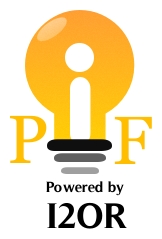School Plant Planning and Students’ Academic Achievements in Public Secondary Schools in Delta State
Abstract
This study examined school plants planning and students’ academic achievement in public secondary schools in Delta State. Four (4) research questions were raised and answered while four (4) null hypotheses were formulated and tested in the study. The variables in the study were reviewed from relevant literature. This research is a correlational study of ex-post facto design and the population consists of all the 479 public secondary school principals and 14,877 teachers in the twenty five (25) Local Government Areas of Delta State. The sample used for this study consists of 50 principals and 1,490 teachers in Delta State public secondary schools selected from 12 Local Government Areas. This represented 10% of the total population (principals and teachers) while 12 Local Government Areas represent 50% of the 25 Local Government Areas. The sampling procedure used was stratified random sampling technique. The instrument used for the study was a self developed questionnaire titled “School Plant Planning and Students’ Academic Achievement Questionnaire and checklist titled “Students Achievement Checklist”.”The instrument was administered with the help of two trained research assistants in the various secondary schools sampled for the study. Mean and standard deviation was used to answer the research questions, while Pearson Product Moment Correlational Statistics was used in testing the null hypotheses at 0.05 level of significance. The findings revealed that pattern of school plant planning differs from one location to another, school facilities have not been equitably distributed to schools. It also revealed that urban schools are more advantageous when it comes to the pattern of distribution facilities and rural schools are marginalized in distribution pattern. Based on the findings, it was concluded that pattern of school plant planning differs from one location to another, school facilities have not been equitably distributed to schools, urban schools are more advantageous when it comes to the pattern of distribution facilities and rural schools are marginalized in distribution pattern. The following recommendation were made that there should be equity in distribution of school facilities to schools as a pattern of school plant planning.There should be proper planning of school site, buildings, equipments, transport, furniture, books, electrical infrastructure, water supply infrastructure, accessories relate to students’ academic achievement. Educational planners should use the right personnel for school plant planning.
Downloads
References
Agabi, O. G. (2014). Facilities Management in Schools. In Nwadiani (Ed). Educational Management for Sub-Saharan Africa. Benin City. NESP.
Alimi, O. S., Ehinola, G. B., & Alabi, F. O. (2012) School Types, Facilities and Academic Performance of Students in Senior Secondary Schools in Ondo State, Nigeria. International Education Studies, 5 (3) pp. 44-48.
Anho, J.E (2022) Managing School In-security challenged Environment: Implications for Teachers’ Professional Pedagogical Commitment in the 21st Century. International Journal of Educational Research. 05 (07), 28-37
Balogun, A (2020). Comparative analysis School Plant Planning from 2001-2006 in Oyo state, Nigeria. Journal of Applied Education and Vocational Research, 7 91), 65-71.
Ebeledike, A.O.(2014). School plant administration: The challenges and transformation in learning and teaching in developing counters. A case study of secondary schools in Nigeria.11,68-56.
Efekodo, K.O (2020) Implementation of Standard Specifications on Secondary School Facilities in Etsako West Local Government Area, Edo State. International Journal of Human Resource Studies. 3 (4)
Eresimadu, F.N.J.(2016). Finance and Cost Concept in Education, Dimension of Educational Planning and Economics in Bosah, H.O.N and Eneasstor,G.O.(Eds),Lagos. Ed-Solid foundation publishers.
Federal Republic of Nigeria (2013), National Policy on Education, revised. Lagos: Federal Ministry of Education, Printing Division.
Kpee, D. (2013) Introduction to Library Studies for NCE Students. Abuja: Alex Ventures Ltd.
Lynch, M. (2011) Allocating Resources to Improve Student Learning. https://www.huffpost.com/entry/allocating-resources-to-i_b_1018778.
Ololube, N. P. (2013). The Problems and Approaches to Educational Planning in Nigeria: A Theoretical Observation. Mediterranean Journal of Social Sciences. Vol 4 (12).
Ovie, K. O (2017) Effective classroom management as a predictor of students’ achievement. Nigerian Journal of Citizenship Education, 7 (1) 24-34.
Ovietobore, M.B (2021) Curriculum and instruction: An introduction to general methods and principles of teaching. Benin City: Reigners’ Press Limited.
Solomon, B (2019) Issues in School Management. Lagos: Bolabay Publications.
Ukaigwe, K. T. (2018). Allocation, Availability and Maintenance of School Facilities as correlate of Academic Performance of Senior Secondary School in Anambra State, Nigeria. International Journal Scientific and Research Publications 8(9) 81 - 88. Retrieved: http://dx.doi.org.
Author(s) and co-author(s) jointly and severally represent and warrant that the Article is original with the author(s) and does not infringe any copyright or violate any other right of any third parties, and that the Article has not been published elsewhere. Author(s) agree to the terms that the Global Publication House will have the full right to remove the published article on any misconduct found in the published article.






















